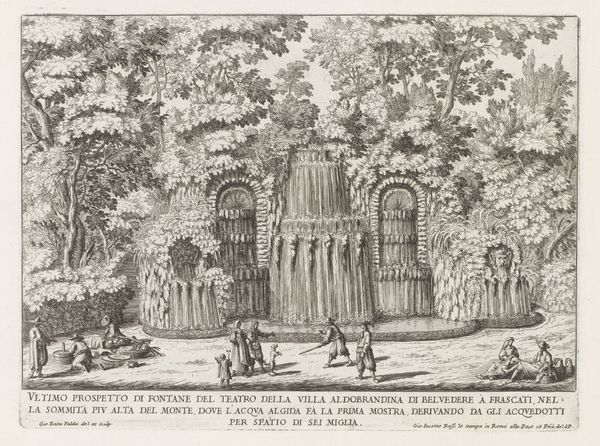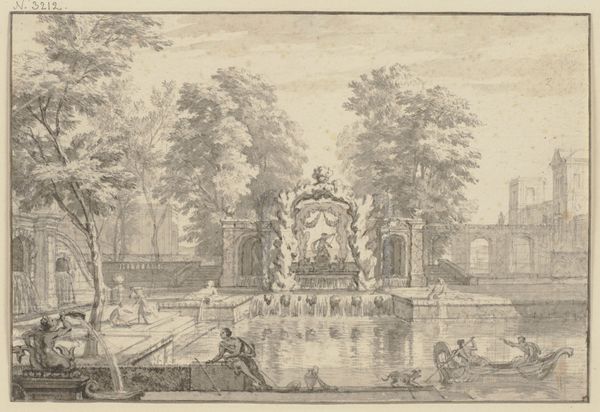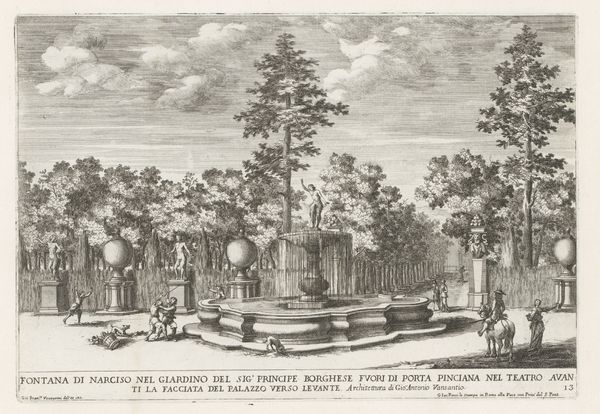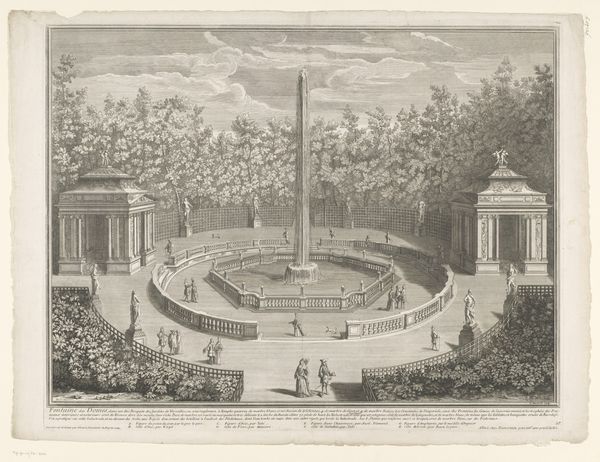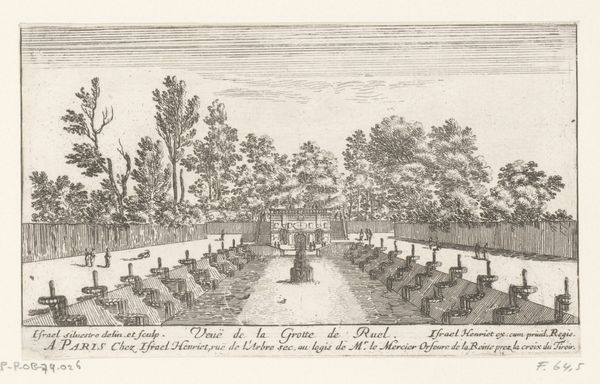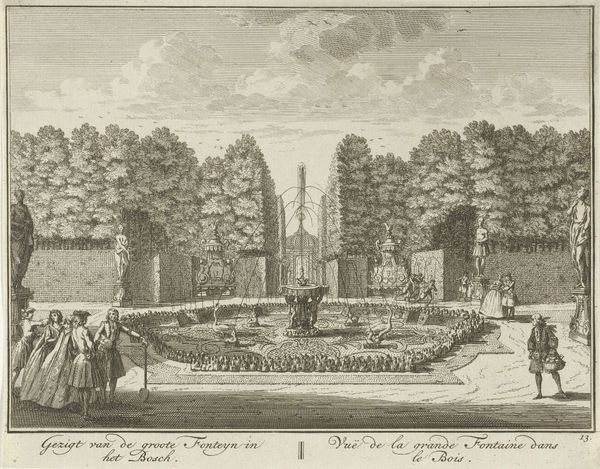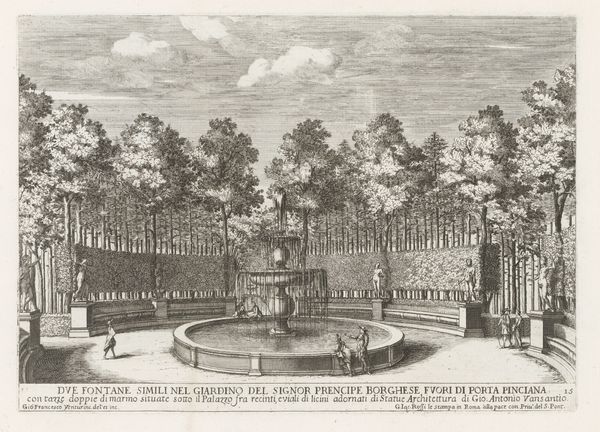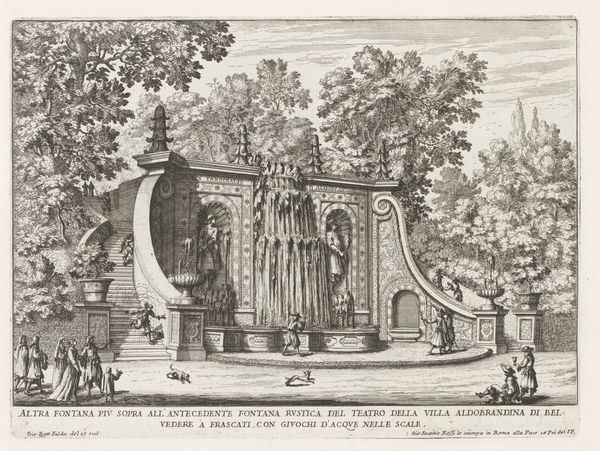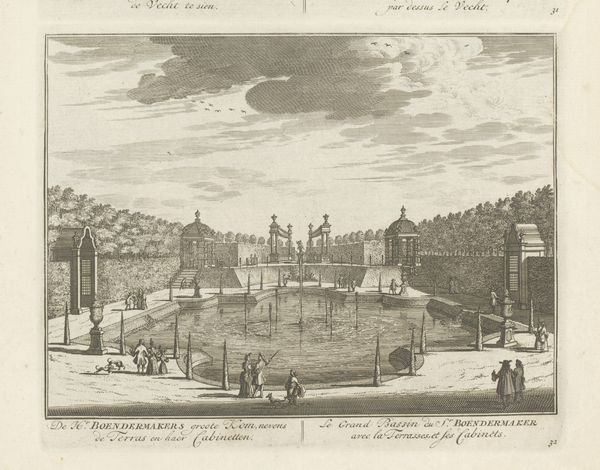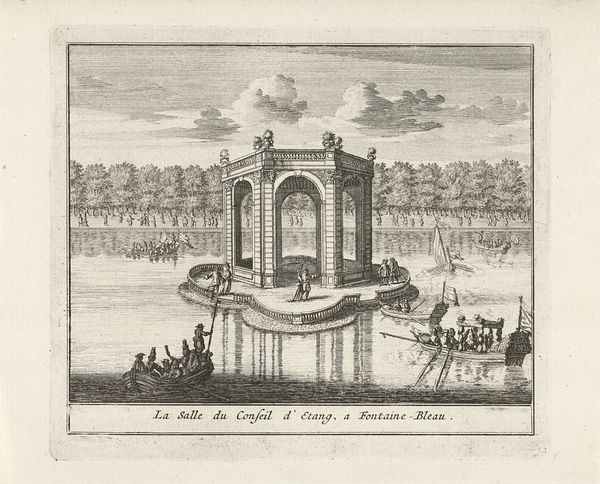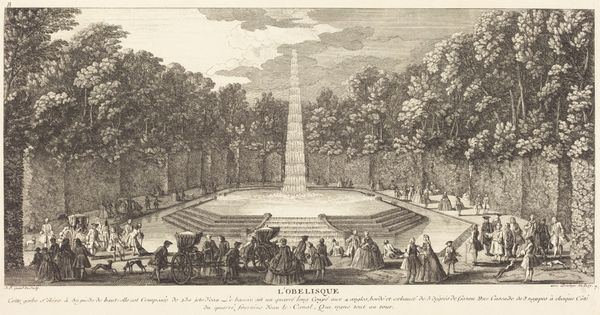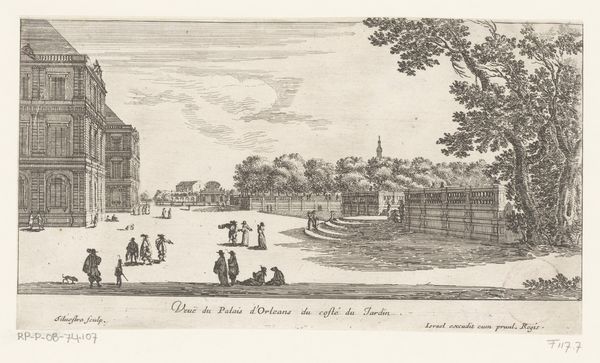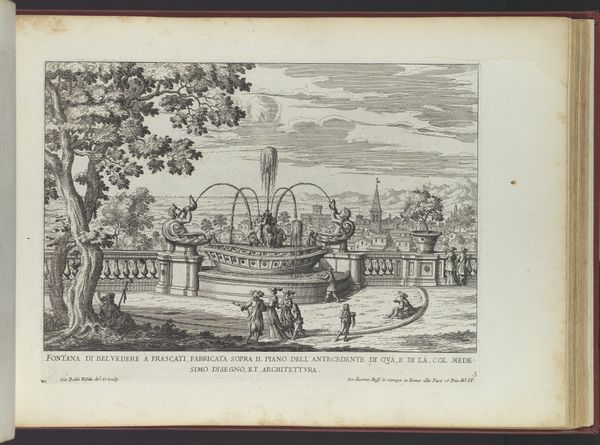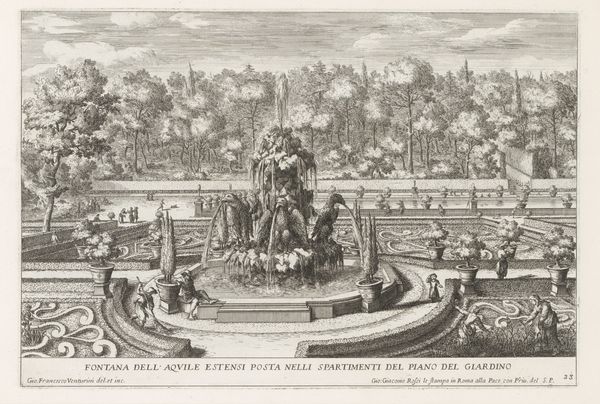
Fontein in de tuinen van de Villa Torlonia te Frascati 1653 - 1691
0:00
0:00
giovannibattistafalda
Rijksmuseum
print, engraving
#
pen and ink
#
baroque
# print
#
landscape
#
line
#
cityscape
#
italian-renaissance
#
engraving
Dimensions: height 213 mm, width 288 mm
Copyright: Rijks Museum: Open Domain
Curator: This print, “Fontein in de tuinen van de Villa Torlonia te Frascati,” created by Giovanni Battista Falda between 1653 and 1691, presents a scene of Baroque splendor. It is rendered in pen and ink and engraving. Editor: My initial impression is one of organized serenity, if that isn't an oxymoron. The geometrical arrangement is striking; everything is carefully laid out. A sort of planned Eden? Curator: Exactly. Falda, as a printmaker and architect, was deeply engaged with depicting the urban spaces and aristocratic properties of Rome and its surroundings. This print functions almost as an advertisement, showcasing the sophisticated waterworks and garden design emblematic of elite leisure. The Torlonia family certainly intended it that way. Editor: The meticulousness of the lines really underscores the deliberate artificiality of it all, doesn't it? There is such detail in the depiction of the fountain, the balustrades, and even the clothing of the figures. One has to appreciate the detail that contributes to the larger picture. Curator: Note how the landscape elements, the trees especially, are shaped to complement the architecture. This merging of nature and design was a core ideal of the Baroque aesthetic, a deliberate taming of the natural world for the delight of the aristocratic gaze. And further, how social performance blends in that landscape design. Editor: It brings into focus the political and social dimensions of art. These weren’t just gardens; they were stages. So how do prints like this reflect the aspirations of a patron? Curator: Prints circulated widely, and enabled nobles, the world over, to appreciate and seek to emulate. This demonstrates the social currency that art generated at that time and indeed can generate today. Editor: Looking closely, this gives me insight into that period’s societal norms, while appreciating Falda’s talent. The line work is incredible in how the eye sees the water—or the soft gradient in the sky! Curator: It reveals that Falda did so much more than to illustrate a fountain—his work documents a society's values and ambitions. Editor: I completely agree. It gives pause to consider that while seemingly “serene” and “geometric,” these spaces are packed with narratives of power, taste, and cultural exchange.
Comments
No comments
Be the first to comment and join the conversation on the ultimate creative platform.
